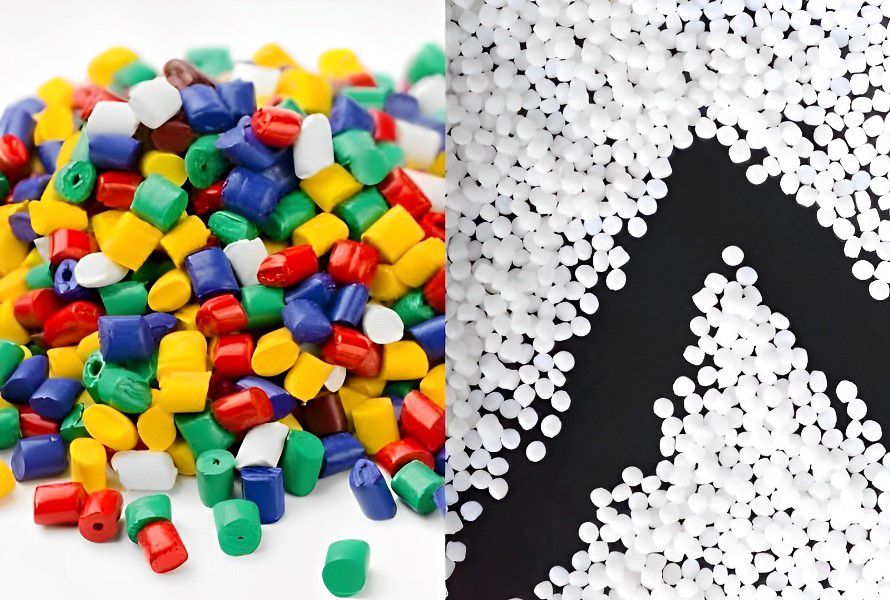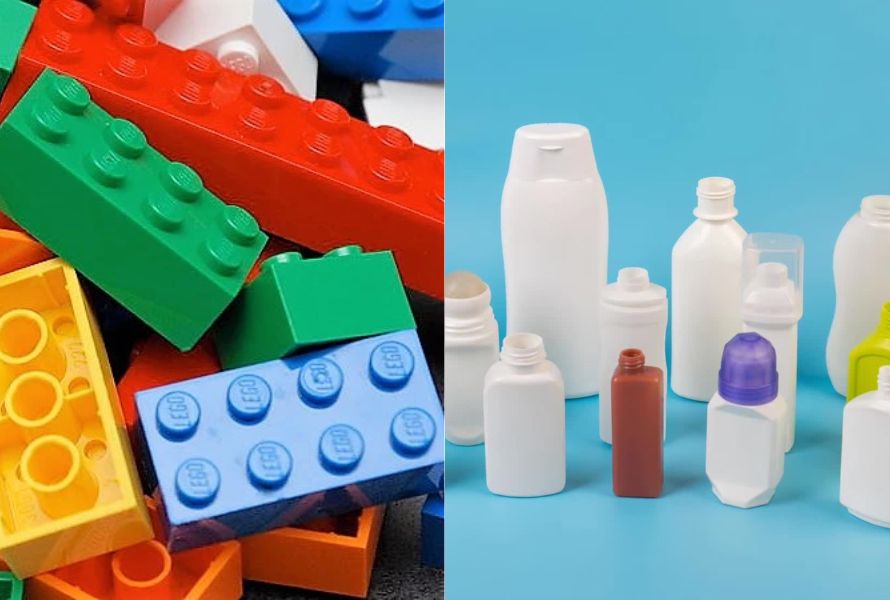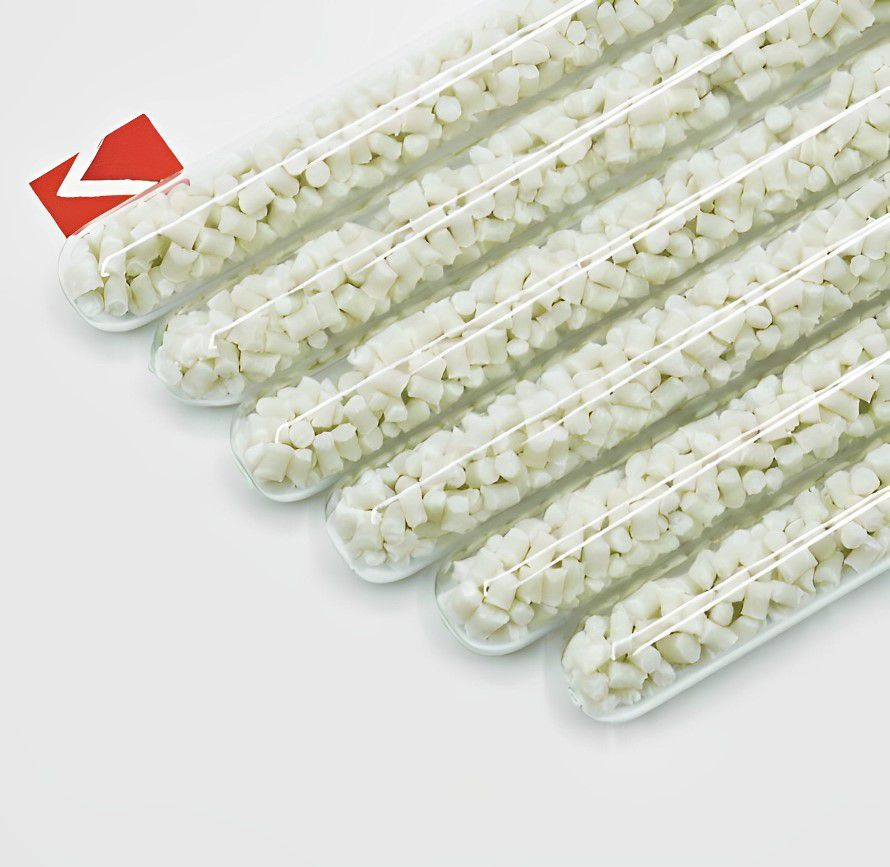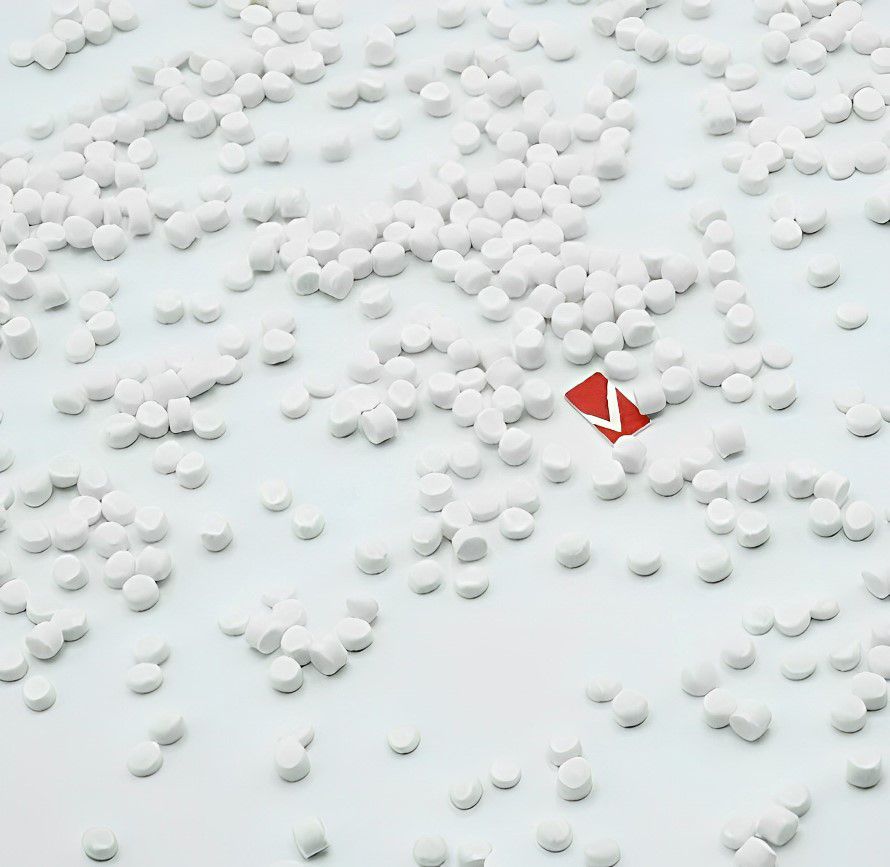There are many different types to choose from when it comes to plastics. Two of the most commonly used types are ABS and HDPE. But what are the main differences between these two materials? In this article, we'll look at the mechanical properties, cost, sustainability, and applications of ABS vs HDPE to help you determine which material suits your needs.

ABS vs HDPE, which one is better?
1. What is ABS plastic?
ABS stands for Acrylonitrile Butadiene Styrene, a thermoplastic polymer made by polymerizing three monomers - acrylonitrile, butadiene, and styrene. It is a versatile plastic commonly used in various applications due to its high impact resistance, durability, and easy processing.
ABS plastic can be easily molded into different shapes using injection molding, extrusion, or 3D printing. It is commonly used in the automotive industry for interior and exterior parts, in the construction industry for pipes and fittings, household appliances, and consumer goods such as toys, luggage, and electronics. ABS plastic is also known for its ability to be easily modified with additives to enhance its properties, such as UV resistance, flame retardancy, and electrical conductivity.

ABS is a thermoplastic polymer made from acrylonitrile, butadiene, and styrene
2. What is HDPE plastic?
High-Density Polyethylene (HDPE) is a synthetic resin with the main component PE - Polyethylene. This plastic is the most rigid plastic resin in the PE group, with good impact and chemical resistance. These outstanding features benefit from the tight molecular structure of the resin.
Due to those properties, HDPE is commonly used to manufacture various products, such as containers and piping, used in harsh environments. It is also resistant to UV radiation, making it suitable for use in outdoor applications.
One of the other benefits of HDPE plastic is that it is recyclable, which means it can be melted down and reused to create new products. This property makes it an environmentally friendly choice for manufacturers and consumers.

High-Density Polyethylene is a synthetic resin with the main component PE
3. ABS vs HDPE - What are the main differences?
3.1 ABS vs HDPE: Mechanical properties
Table 1 displays the mechanical properties of ABS vs HDPE (Source: MatWeb).
Table 1: The mechanical properties of ABS vs HDPE
| |
ABS |
HDPE |
| Density |
1.01 - 1.20g/cc |
0.933 - 1.27g/cc |
| Hardness, Rockwell R |
68.0 - 118 |
80.0 - 112 |
| Tensile Strength, Ultimate |
22.1 - 74.0 MPa |
15.2 - 45.0 MPa |
| Tensile Strength, Yield |
13.0 - 65.0 MPa |
2.69 - 60.7 MPa |
| Water Absorption |
0.0500 - 1.00% |
0.0100 - 0.300% |
| Elongation at Break |
3.00 - 150% |
3.00 - 1900% |
| Elongation at Yield |
2.00 - 30.0% |
7.00 - 14.0% |
| Modulus of Elasticity |
1.00 - 2.65 GPa |
0.483 - 1.75 GPa |
| Flexural Yield Strength |
0.379 - 593 MPa |
16.5 - 91.0 MPa |
| Flexural Modulus |
0.200 - 5.50 GPa |
0.500 - 4.83 GPa |
| Electrical Resistivity |
1.00e+9 - 1.00e+17 ohm-cm |
1.00 - 1.00e+20 ohm-cm |
| Surface Resistance |
1.00e+8 - 1.00e+16 ohm |
100 - 1.00e+17 ohm |
| Glass Transition Temperature / Melting Point |
108 - 109 °C |
26.0 - 135 °C |
| Flammability, UL94 |
HB - V-0 |
HB - V-0 |
| Processing Temperature |
76.7 - 240 °C |
180 - 255 °C |
| Melt Temperature |
170 - 320 °C |
124 - 321 °C |
ABS is a thermoplastic that has high impact strength and toughness. It can withstand high temperatures and is resistant to chemicals. On the other hand, HDPE (High-Density Polyethylene) is a plastic that is known for its good tensile strength, resistance to chemicals and impact, and excellent electrical insulation. It is also lightweight and anti-UV.
3.2 ABS vs HDPE: Cost
When it comes to cost, ABS is generally more expensive than HDPE. This is because ABS is more complex to manufacture and requires more processing steps than HDPE. However, the high cost of ABS is often justified by its superior mechanical properties and durability.
HDPE, on the other hand, is one of the most cost-effective plastics available. It is easy to manufacture and can be produced in large quantities, which helps to keep costs down. The cost of virgin material is around $0.80-1.20 per kilogram. This makes HDPE an ideal material for use in applications where cost is a primary consideration.
3.3 ABS vs HDPE: Sustainability
HDPE materials are highly recyclable and can last for ten cycles or more if correctly sorted and gently treated). HDPE films are often tinted and utilized in heavier sections since they are simple to separate for purity. Unless a color-controlled recycled material is desired, the process only necessitates complete color separation at the sorting step. A primary brown hue is acceptable for most recycled uses.
Because of its chemical resistance, ABS is also a frequently recycled material that can withstand the process for many cycles. Many recycled ABS components are from architectural, automotive, and consumer goods. The sorted plastic is cleaned, dried, and shredded into tiny shards for more straightforward processing. This material is then heated to melting temperature before being extruded as pellet feedstock. Consequently, high-quality second-grade material with a dark hue may be utilized for various conventional applications.
3.4 ABS vs HDPE: Applications
ABS and HDPE are versatile materials used in a wide range of applications. ABS is widely utilized in consumer goods, automobiles, or medicines such as:
- Automotive parts
- Toys
- Electronic housings
- Appliances
- Sports equipment
- Refrigeration
- Electronic and electrical manufacturing
- Medical-device enclosures
HDPE is vital in residential, commercial, and industrial sectors. Some of its typical applications are:
- Packaging
- Chemical containers
- Piping
- Outdoor furniture
- Water tanks
Table 2: Comparison of ABS vs HDPE
| |
ABS |
HDPE |
| Mechanical properties |
-High impact and chemical resistance
-High temperatures durability
-Good toughness and rigidity |
-High tensile strength
-High chemical and impact resistance
-Lightweight |
| Cost |
-More expensive
-Around $2.4/kg for raw material and $4/kg for customized masterbatch. (Source: ChemAnalyst) |
-More cost-effective
-Around $0.80-1.20/kg for raw material. (Source: Statista)
|
| Sustainability |
-Both can be recycled easily for many cycles |
| Applications |
-Suitable for applications requiring high impact strength, high temperature and aesthetic appeal. |
-Suitable for applications requiring high chemical resistance, high dielectric strength and lightweight. |
IV. ABS vs HDPE - Which one is better?
So which one is better? The choice between ABS vs HDPE depends on the specific application requirements and environmental conditions.
ABS is more suitable for applications that require high strength, rigidity, and impact resistance, such as automotive parts and electronics housings. HDPE is ideal for applications requiring high chemical resistance and moisture barrier properties, such as pipes, containers, and agricultural films.
Overall, the choice will depend on your specific needs and requirements. ABS may be suitable if you need a material with superior mechanical properties and durability. However, if cost is a primary consideration or if you are looking for a more sustainable material, HDPE may be the better option.

The choice between ABS vs HDPE depends on the requirements and conditions
5. ABS & HDPE products from EuroPlas
With a strong commitment to excellence, EuroPlas takes pride in producing ABS and HDPE products that meet the highest industry standards. As one of the world's leading plastic and filler manufacturers, our company combines innovation, expertise, and cutting-edge technology to deliver exceptional solutions to our customers.
5.1 ABS plastic engineering compound
ABS plastic engineering compounds are a prominent type of plastic engineering compound. EuroPlas ABS compound is created by combining ABS plastic, reinforcing agents, and suitable additives to meet the industry standards and customers' desires. Some of our outstanding ABS products are:
- ABS Glass fiber compound
- ABS Antistatic compound
- ABS Flame retardant compound
ABS engineering plastic compound has been widely employed in numerous sectors, including electronics, household electrical appliances, and electrical engineering,...

EuroPlas ABS consists of ABS plastic, reinforcing agents, and suitable additives
5.2 ABS color masterbatch
Besides ABS plastic engineering compounds, ABS can also be used as a color masterbatch to provide appealing colors for the end product. The ABS color masterbatch disperses well on the completed product surface and is heat and weather resistant.
Another advantage of colored ABS compound is the capacity to produce a variety of effects, including fluorescent, metallic, translucent, and pearlescent... As a result, this material can satisfy both product quality and aesthetic standards.
5.3 PE filler masterbatch
EuroPlas is the world's largest manufacturer and supplier of filler masterbatch. Our PE filler masterbatch stands out as a premium solution designed to enhance the properties of plastic materials.
PE filler masterbatch from EuroPlas comprises PE resin, CaCO3, and other additives such as processing aid and dispersion agent. It helps reduce production costs and improve end-product mechanical properties such as impact resistance, heat resistance, surface hardness, strength endurance, and flexibility.

PE filler masterbatch from EuroPlas helps reduce production costs and improve product properties
Thanks to its excellent properties, our PE filler masterbatch is widely utilized in various industries, including packaging, automobile, blown film, household goods… With EuroPlas, you can rely on our commitment to innovation, reliability, and customer satisfaction as we continue to set the benchmark for excellence in the plastic and filler industry. Contact us for more information.